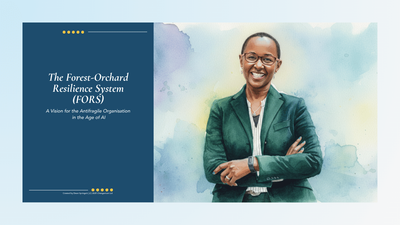The Termite Cathedral

How are termites able to build cathedrals 500× their height with no roadmap, no CEO, and no coordination meetings?
No termite understands architecture. Neither have they seen a supply chain flowchart. Yet with a bit of spit and mud, they are able to build climate-controlled structures and optimise resource distribution better than most companies.
The secret is a phenomenon that I recently discovered is called
"Stigmergic Coordination."
This is when the work itself is the communication and instruction manual the workers follow, rather than some pre-defined blueprint or management mandate.
When a termite adds mud to a structure, it leaves a pheromone trace that signals "build here." When an ant finds food, its trail back to the nest becomes the instructions others follow. The environment orchestrates the behaviour.
What could this look like in a human organisation?
- A few guardrails, strong shared values, and a knowledge architecture that surfaces what matters
- Self-organising teams that respond to signals emerging from the work itself, rather than waiting for permission to act.
Wikipedia is one of the organisations that already works this way. Red links signal where articles are needed. Most new articles are created shortly after a corresponding reference to them enters the system. There is no central editor assigning work, nor is there a project manager to track progress, as the gaps in knowledge create the work queue. An editorial board provides the guardrails, but otherwise, the work literally coordinates the workers, and they are all independent contributors.
What's exciting is that AI and other emerging technologies are making stigmergic coordination a practical possibility across all business operations.
For instance, when a customer complaint arrives, it could automatically route to whoever has capacity and expertise. No manager needs to assign it. When inventory drops below threshold, the system reorders. No approval is required. When code fails a test, it blocks deployment and notifies the author. The project manager no longer has to play messenger.
The technologies that make this possible already exists and are improving daily. We just need to stop managing for yesterday's stability and start designing for tomorrow's dynamism.
Food for thought:
What's one value stream in your organisation where the work could coordinate itself?
Subscribe to the FORS Report
Be the first to know - subscribe today





Member discussion